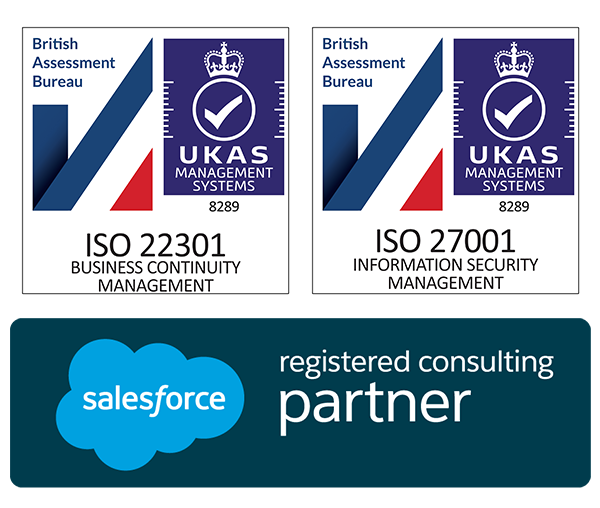
Employees: Part 3 of 4 – Training

Richard Branson has so far put it best,
“Train your staff well enough to leave, treat them well enough that they won’t want to.”
Good training and development programs help you keep the right people and grow profit. The battle for top talent is now at its most competitive. Thus, employee training and development programs are more vital than ever. Hiring top talent takes time and money, and how you engage and develop that talent impacts retention and business growth.
As companies grow and the war for talent intensifies, it is increasingly important that training and development programs are not only competitive but are supporting the organisation on its defined strategic path. And it’s not just about retention. Employee training and development programs directly impact your bottom line.
So how can you go about training your employees? Here are some key components we’ve identified.
Blend in-person training and online training.
Both in-person and online training have inherent benefits. An InterCall survey found that 50 percent of employers believed in-person training helped them retain information. This makes sense considering that the trainer would be able to answer employee questions while presenting the material.
But once the trainer leaves the office and employees try to apply their new skills, who’s going to clear up any confusion? This is probably why 48 percent of respondents said they still want to be able to review content at a later time.
By incorporating both in-person and online resources, employees can get a fuller understanding of the information during training and have a reference to turn to if issues arise in the future.
Provide hands-on training.
In a Skillsoft survey of over 1,000 office workers, 33 percent said they prefer to learn by feeling or experiencing what they’re learning. Hands-on training affords employees the opportunity to apply what they’re learning before they have to translate the skills to their day-to-day tasks.
Whenever possible, let employees try out and experiment with their new skills in a controlled environment. This will help them build confidence without risking the chance that inexperience will lead to serious mistakes.
Incorporate mobile training apps.
More and more positions now come with some location flexibility. Data from Global Workplace Analytics in September found that as much as 25 percent of employees work remotely to some degree.
Given the importance of training, it’s surprising that in a Brandon Hall survey of over 500 companies, only 10 percent reported a high level of mobile learning module usage.
Mobile training applications not only ensure teleworkers are up-to-date on all the latest information, but also give every employee the option to learn in an environment in which they feel comfortable and free of distractions. If even a small percentage of the office decides to complete training at home, it also means less work time spent on training.
Allow employees to learn at their pace.
Everybody learns at their speed, but most companies aren’t considering that fact when designing training programs. The Association for Talent Development survey of 340 organisations found that only 16 percent of responding companies use online training methods that allow employees to set their pace.
By not being able to review training information how they’d like, employees are forced to rush through complicated topics. It also denies employees time to take a moment and process what they’ve learned, which is an important part of the learning process.
A 2016 study from the Harvard Business School found that participants who were asked to stop and reflect on a task they’d just performed improved at greater rates than participants who solely practised a task. So by giving, and encouraging, employees time to think about what they’re doing, learning will be quicker and more reinforced.
Additionally, training platforms like Tasytt make it easy for employees to add their contributions to training material and rewards them for doing so. For example, after completing a training unit, an employee can reflect and share their input with others. This not only makes training more engaging but also ensures each employee is properly processing what they’re learning.
Training Benefits
Training helps your business run better. Trained employees will be better equipped to handle customer inquiries, make a sale or use computer systems.
Training is a recruiting tool. Today’s young workers want more than a pay cheque. They gear towards seeking employment that allows them to learn new skills. You are more likely to attract and keep good employees if you can offer development opportunities.
Training promotes job satisfaction. Nurturing employees to develop more rounded skill sets will help them contribute to the company. The more engaged and involved they are in working for your success, the better your rewards.
Training is a retention tool, instilling loyalty and commitment from good workers. Staff looking for the next challenge will be more likely to stay if you offer ways for them to learn and grow while at your company. Don’t give them a reason to move on by letting them stagnate once they’ve mastered primary tasks.
Training Benefits continued
Training adds flexibility and efficiency. You can cross-train employees to be capable in more than one aspect of the business. Teach them to be competent in sales, customer service, administration and operations. This will help keep them interested and will be enormously helpful to you when setting schedules or filling in for absences. Cross-training also fosters team spirit, as employees appreciate the challenges faced by co-workers.
Training is essential for knowledge transfer. Sharing knowledge among your staff is imperative. If only one person has unique skills, you’ll have a tough time recouping their knowledge if they suddenly leave the company. Spread knowledge around — it’s like diversifying your investments.
Training gives seasonal workers a reason to return. Let seasonal employees know there are more ways than one to contribute. Instead of hiring someone new, offer them a chance to learn new skills and benefit from their experience.
Conclusion
Learning and upgrading employee skills makes business sense. It starts from day one, and becomes successive as your employees grow. Granted, it may take some time to see a return on your investment, but the long-term gains associated with employee training make a difference. The short-term expense of a training program ensures you keep qualified and productive workers who will help your company succeed. That’s an investment you can take to the bank.
We’ve been in the Sales and Marketing Strategy game for longer than we care to remember, but we pride ourselves on the combined exposure our team has had to different B2B markets globally, and the strategic services we offer your business as a result.
If you are looking for Salesforce / Pardot Support with an existing Org or want to know if Salesforce or Pardot is right for you, get in touch with us for a free consultation or simply a chat. We regularly work alongside Start-ups and Enterprises alike, so we’re certain we will find you a path to growth, whatever your plans.
We are open Monday-Friday 9-6pm and have open channels for communication either on our LinkedIn, Twitter or you can simply give us a call on 020 8106 8500.



